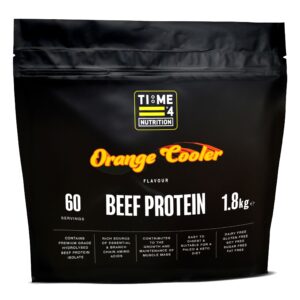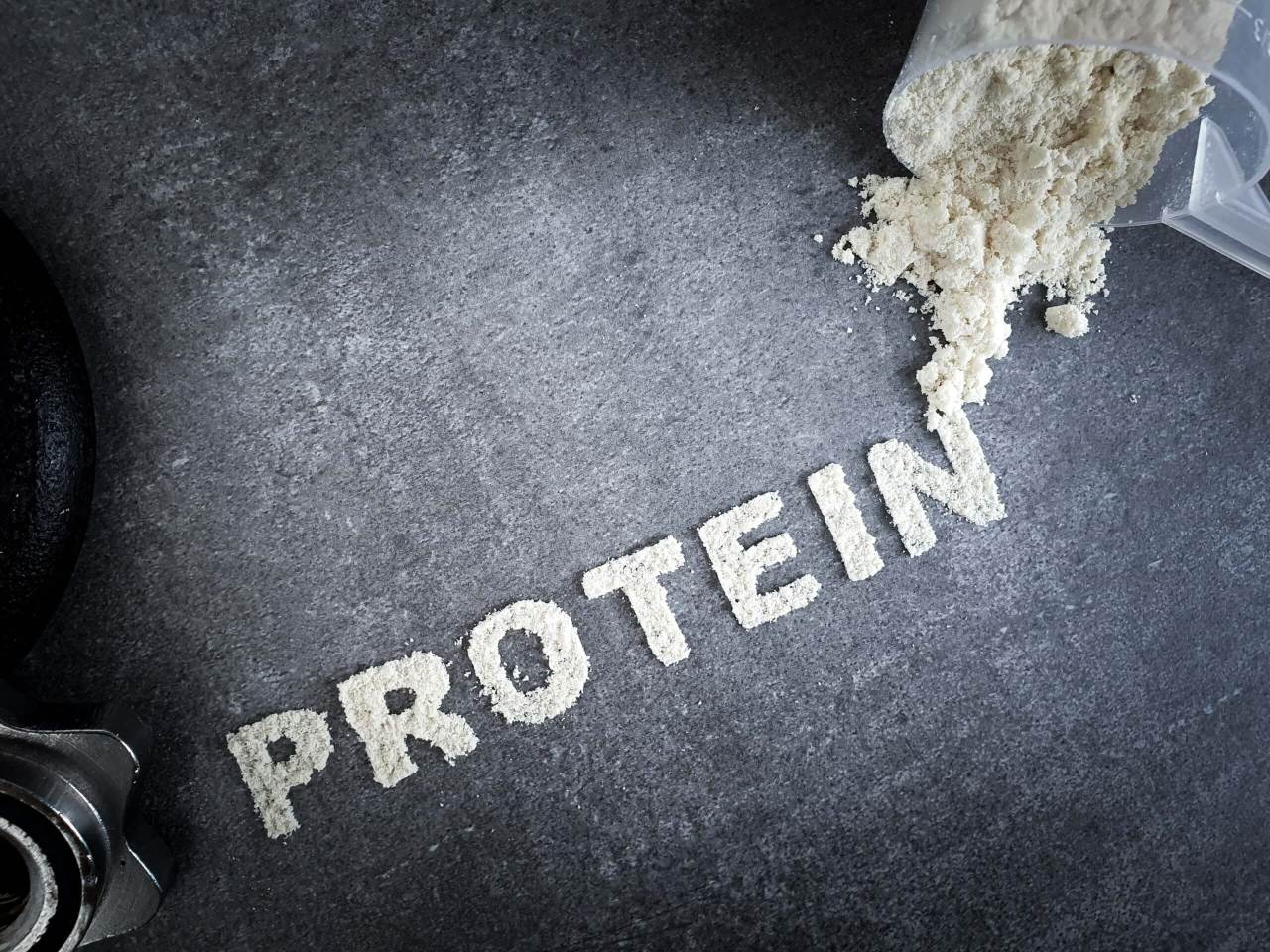How Much Protein Can Be Absorbed In One Meal?
How Much Protein Can Be Absorbed In One Meal?
Bigger may be better, when it comes to protein intake, according to a recent study
The importance of ensuring an adequate intake of protein to build and maintain muscle mass is well acknowledged. This is because after the protein we eat is digested, its amino acids are absorbed in the gut. Some of these are removed from the blood by various organs, such as the stomach and the liver, while the majority are released into the blood stream, where they can be taken up by the tissues of the body including the muscles. These amino acids can either be used to build and repair muscle (protein synthesis) and/or oxidised. This means that they are broken down to produce energy and other substances.
The amino acids derived from the protein we consume not only serve to drive muscle protein synthesis, but also act as important signalling molecules that regulate anabolic and catabolic pathways in the body. For example, the amino acid leucine, prevents the breakdown of muscle proteins after trauma or severe stress and provides the signal to switch from a catabolic state to an anabolic state in which the body begins to rebuild muscle after training.
In fact, so important is protein intake that the International Society of Sports Nutrition (ISSN) publish a position stand (1) devoted entirely to this subject. This states that for building and maintaining muscle mass, an overall daily protein intake in the range of 1.4–2.0 grams per kilogram of body weight per day is recommended. So, for example, if you weigh 100kg, you will need to consume 140-200 grams of protein per day. Traditionally, it has been recommended that this should be broken down into an absolute dose of 20–40 grams evenly distributed every 3–4 hours across the day.
Using the example of the 100kg person, this means that they would need to consume somewhere between 10 meals of 20 grams of protein or 5 meals of 40 grams to meet the 200g target, which can be a considerable challenge for many people, due to the constraints of work, life, and training.

A new approach: could this be a game changer?
The results of new study by Trommelen et al., (2) have now cast doubt on the effectiveness of this approach. The authors suggest that previous studies have been misleading when they reported that the ingestion of 20–25 grams of protein is sufficient to maximise postexercise muscle protein synthesis rates in healthy, young adults, with no further increase in muscle protein synthesis rates occurring when larger amounts are consumed. Furthermore, that higher protein intake did not further increase anabolic signalling, and excess amino acids were oxidised.
This led to the advice to distribute protein intake evenly throughout the day, with each main meal providing no more than 20–25 grams of protein.
Though this makes sense based on the typical eating patterns of modern humans, it seems to be at odds with the feeding practices of many animals in nature that consume large amounts of food infrequently.
Most notably, snakes can ingest a large meal equivalent to 25% of body weight or more, which results in prolonged protein digestion, amino acid absorption, and elevated protein synthesis rates for approximately 10 days, with only around 5% of the ingested protein being directed to amino acid oxidation.
Consider our own hunter-gatherer ancestors, who needed to eat when food was available, which may have been infrequent. Would nature have limited their ability to absorb such an important nutrient when their food supply was unpredictable?
Without being too technical, the underestimation of our ability to metabolise protein seems to stem from the methods used traditionally to assess the body’s response to protein ingestion. In short, studies in humans have been confined to the assessment of protein response following the ingestion of moderate amounts of protein of around 45 grams over relatively short durations of 6 hours or less. When ingesting larger amounts of protein, such a short time frame is unlikely to be sufficient to allow complete digestion and amino acid absorption. Consequently, it does not provide a reliable assessment of the body’s ability to metabolise protein after eating.

Study design
Trommelen et al., (2) took a different approach. Participants performed whole-body resistance training workout comprising 4 sets of 10 repetitions for the legs, chest and back until volitional fatigue. Much like a typical muscle building workout. Immediately after the exercise session, a blood sample was obtained, and a biopsy sample was taken from the quadriceps muscle. Participants then consumed a beverage containing 800 mL water with either 0 g, 25 g, or 100 g of milk protein. Further blood samples were then collected at 30 minutes then every hour for a period of 12 hours after feeding. Additional muscle biopsies were also taken.
Results
The results showed that higher protein synthesis rates occurred following the ingestion of 100 grams of protein in comparison to 25 grams and the placebo. The greater metabolic responses were present during the first 4 hours but were even more pronounced in the following 4–12 hours. In short, the ingestion of 100 grams of protein results in a greater and more prolonged anabolic response compared to 25 grams. The authors concluded that even very large amounts of dietary protein are used effectively to support tissue anabolism after eating, but require a longer period for complete digestion and amino acid absorption to become available for incorporation into tissues. Therefore, the duration of the post-feeding state is dependent on the amount of ingested protein and has the capacity to exceed 12 hours. In light of these results, it seems that the size and duration of the anabolic response to protein ingestion is not restricted and has previously been underestimated in humans.
What are the practical implications of these findings?
You may be thinking as interesting as this study is, how does it affect my day-today eating strategy? Firstly, if due to your lifestyle, you find it difficult to consume 20-40 grams of protein every 3-4 hours, you could consume a larger portion, such as 50 or 100grams, less frequently and still achieve a good anabolic response. Similarly, if you practice intermittent fasting and have limited time for feeding, e.g., 8 hours, you can still consume sufficient protein to satisfy your needs. The findings of this study also highlight the benefits of using protein with varying release times, such as Time 4 Whey Protein Professional.
The ISSN (1) suggest that rapidly digested proteins that contain high proportions of essential amino acids (EAAs) and adequate leucine, e.g., whey protein, are most effective in stimulating muscle protein synthesis. However, the ISSN also recommends the consumption of the slower acting casein at certain times to increase muscle protein synthesis. The difference in absorption rates of the types of protein help to ensure your body is supplied with a steady stream of vital amino acids to optimise recovery and adaptation to exercise.
Just click here to learn more.

How Much Protein Can Be Absorbed In One Meal? – Conclusion
The results of this study do not mean that you have to change your eating patterns and start to consume larger amounts of protein less frequently. Rather, they show that contrary to the traditional belief, large amounts of protein are used to support tissue anabolism after eating but require a longer period for complete digestion and amino acid absorption. Armed with this knowledge, you can develop the eating strategy that best works for you. That may be consuming 20–40 grams evenly distributed every 3–4 hours across the day, or consuming a larger quantity but less often.
It is important to note that while the timing of our protein intake is important for optimising growth and repair, ensuring we meet the guidelines for total protein intake, i.e., 1.4–2.0 grams per kilogram of body weight per day, is more important. This can be achieved through the consumption of whole foods and the use of high-quality protein supplements (1).
Introducing Time 4 Whey Protein Professional
Time 4 Whey Protein Professional sets the standard for a new era of evidence-based sports supplements.
Our Premium Grass Fed Timed Release Peptide Protein Blend contains Whey Protein Concentrate, Partially Hydrolysed Whey Isolate & Micellar Casein protein in their undenatured form & NO cheap fillers such as skimmed milk powder.
We have also added additional Leucine & Taurine for enhanced muscle growth & exercise performance, Glycyl-L-Leucine to maximise the uptake of Leucine, Lactoferrin to enhance recovery & immunity, plus Digestive Enzymes to optimise absorption.
Time 4 Whey Protein Professional does not contain carboxymethylcellulose (CMC) is suitable for Vegetarians & is Gluten & Soy Free.


